Похожие презентации:
Graphs and Multigraphs
1. Week Eight
2. Graphs and Multigraphs
A graph G consists of two things:(i) A set V = V(G) whose elements are called vertices, points, or nodes of G.
(ii) A set E = E(G) of unordered pairs of distinct vertices called edges of G.
We denote such a graph by G(V,E) when we want to emphasize the two parts
of G.
3. Graphs and Multigraphs
Vertices u and v are said to beadjacent or neighbors if there is an
edge e = {u,v}.
In such a case, u and v are called the
endpoints of e, and e is said to
connect u and v.
Also, the edge e is said to be incident
on each of its endpoints u and v.
Graphs are pictured by diagrams in
the plane in a natural way.
Specifically, each vertex v in V is
represented by a dot (or small
circle), and each edge e = {v1, v2} is
represented by a curve which
connects its endpoints v1 and v2
4. Multigraphs
Consider the diagram on the left.The edges e4 and e5 are called
multiple edges since they connect
the same endpoints, and the edge
e6 is called a loop since its
endpoints are the same vertex.
Such a diagram is called a
multigraph; the formal definition
of a graph permits neither multiple
edges nor loops. Thus a graph may
be defined to be a multigraph
without multiple edges or loops
5. Degree of a Vertex
The degree of a vertex v in a graph G, writtendeg (v), is equal to the number of edges in G
which contain v, that is, which are incident on
v.
Since each edge is counted twice in counting
the degrees of the vertices of G, we have the
following simple but important result.
Theorem 8.1: The sum of the degrees of the
vertices of a graph G is equal to twice the
number of edges in G.
Consider, for example, the graph on the right.
We have
deg(A) = 2, deg(B) = 3, deg(C) = 3, deg(D) = 2.
The sum of the degrees equals 10 which, as
expected, is twice the number of edges.
A vertex is said to be even or odd according
as its degree is an even or an odd number.
Thus A and D are even vertices whereas B and
C are odd vertices.
6. Degree of a Vertex
Theorem 8.1 also holds formultigraphs where a loop is
counted twice toward the degree
of its endpoint.
For example, in the graph on the
left we have deg(D) = 4 since the
edge e6 is counted twice; hence D
is an even vertex.
A vertex of degree zero is called an
isolated vertex.
7. Finite Graphs, Trivial Graphs
A multigraph is said to be finite if it has a finite number of vertices and afinite number of edges.
Observe that a graph with a finite number of vertices must automatically
have a finite number of edges and so must be finite.
The finite graph with one vertex and no edges, i.e., a single point, is called
the trivial graph.
Unless otherwise specified, you may assume that all the multigraphs shall be
finite.
8. SUBGRAPHS, ISOMORPHICAND HOMEOMORPHIC GRAPHS
SubgraphsConsider a graph G = G(V,E).Agraph H = H(V’,E’) is called a subgraph of G if
the vertices and edges of H are contained in the vertices and edges of G, that
is, if V’ ⊆ V and E’⊆ E. In particular:
(i) A subgraph H(V’,E’) of G(V,E) is called the subgraph induced by its vertices V’ if
its edge set E’ contains all edges in G whose endpoints belong to vertices in H.
(ii) If v is a vertex in G, then G − v is the subgraph of G obtained by deleting v from
G and deleting all edges in G which contain v.
(iii) If e is an edge in G, then G − e is the subgraph of G obtained by simply
deleting the edge e from G.
9. Isomorphic Graphs
Graphs G(V,E) and G*(V*,E*) aresaid to be isomorphic if there
exists a one-to-one correspondence
f: V → V ∗ such that {u,v} is an
edge of G if and only if {f(u),f(v)} is
an edge of G*.
Normally, we do not distinguish
between isomorphic graphs (even
though their diagrams may “look
different”)
10. Homeomorphic Graphs
Given any graph G, we can obtaina new graph by dividing an edge of
G with additional vertices.
Two graphs G and G* are said to
homeomorphic if they can be
obtained from the same graph or
isomorphic graphs by this method.
The graphs (a) and (b) on the left
are not isomorphic, but they are
homeomorphic since they can be
obtained from the graph (c) by
adding appropriate vertices.
11. PATHS
A path in a multigraph G consists of an alternating sequence of vertices andedges of the form
























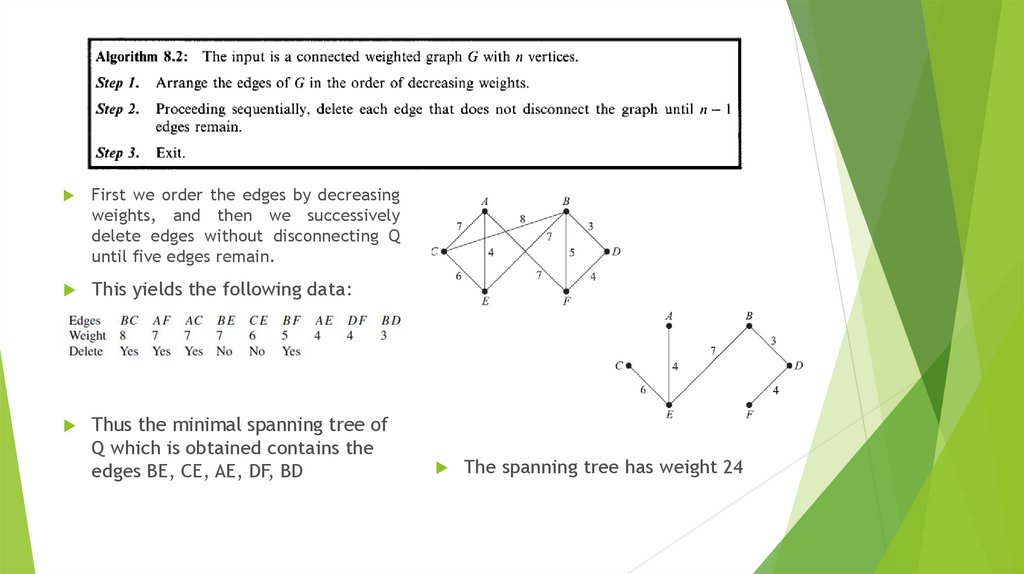

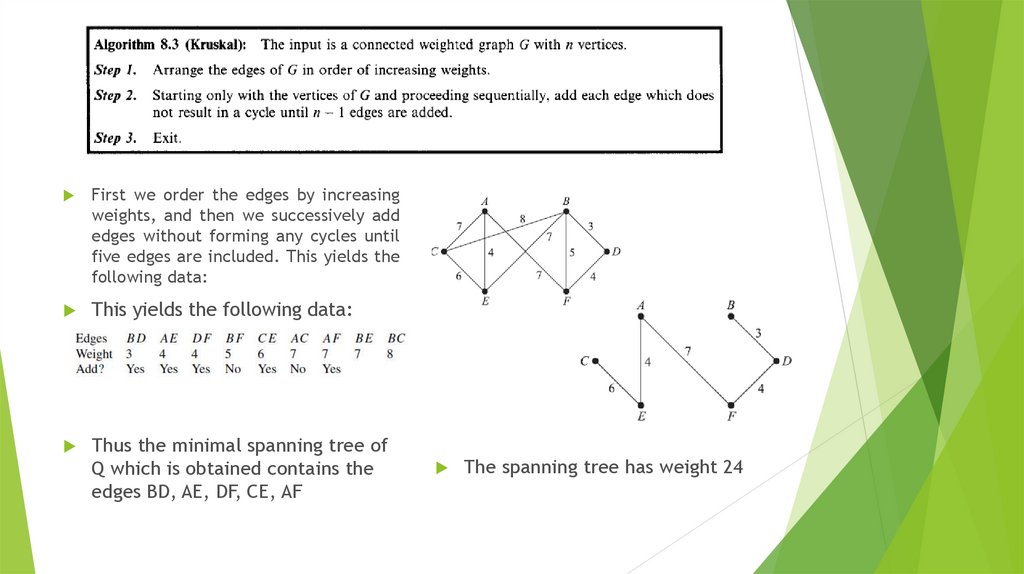



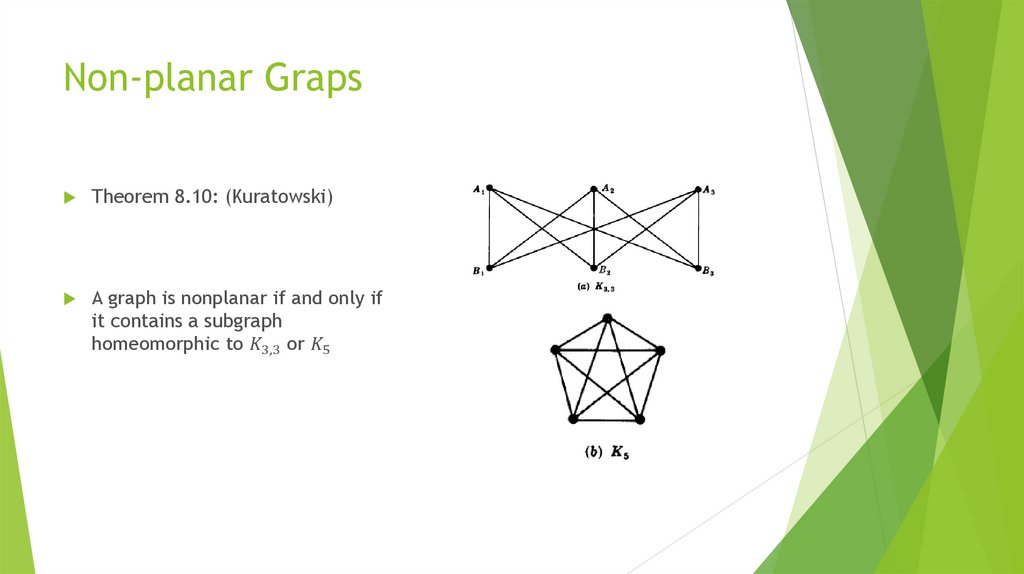
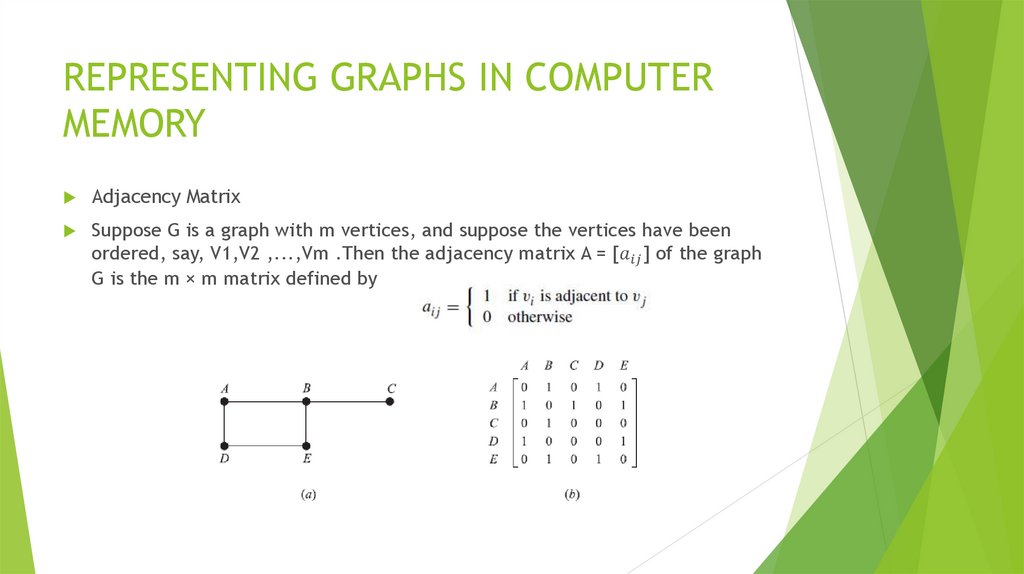


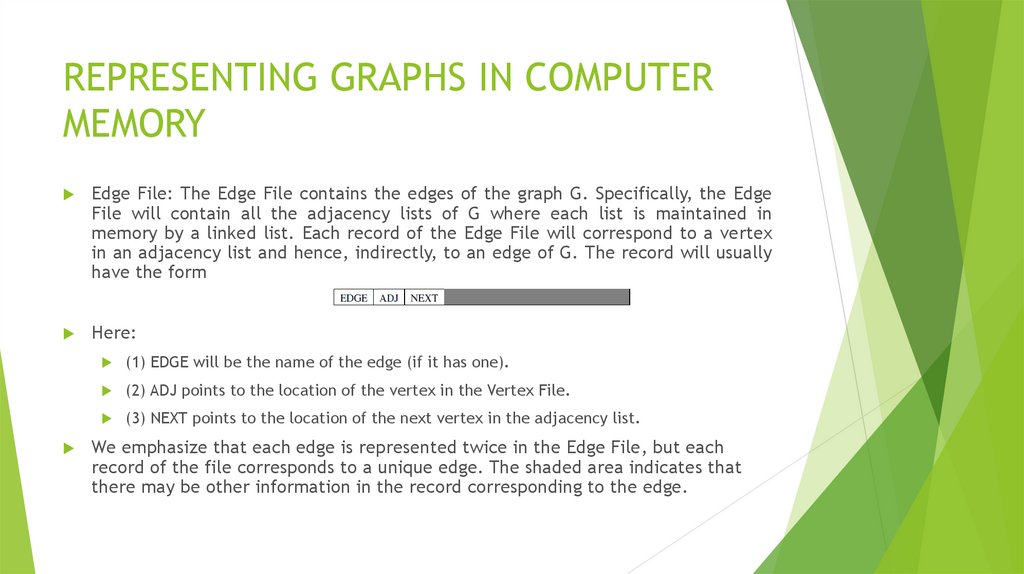


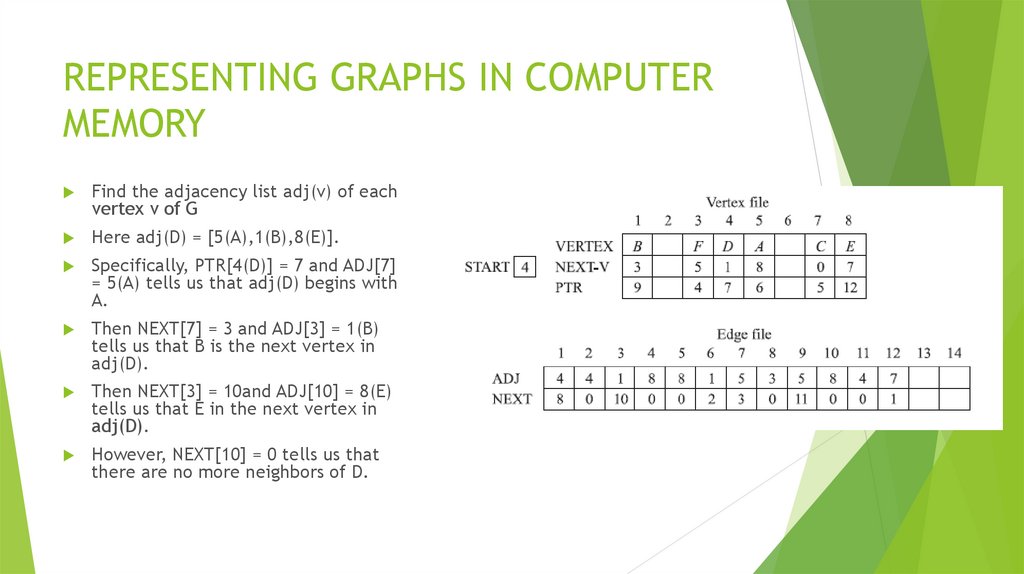
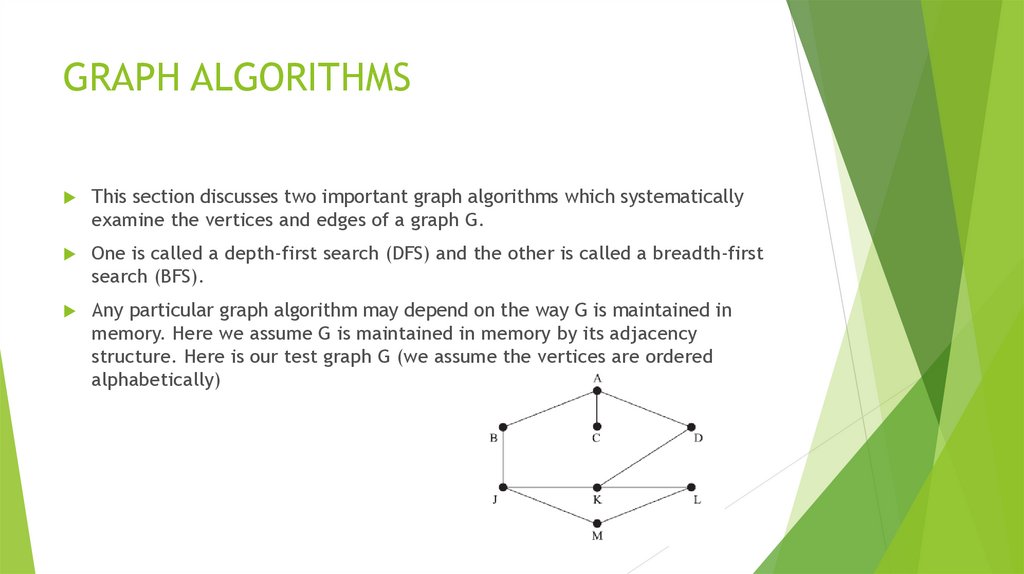







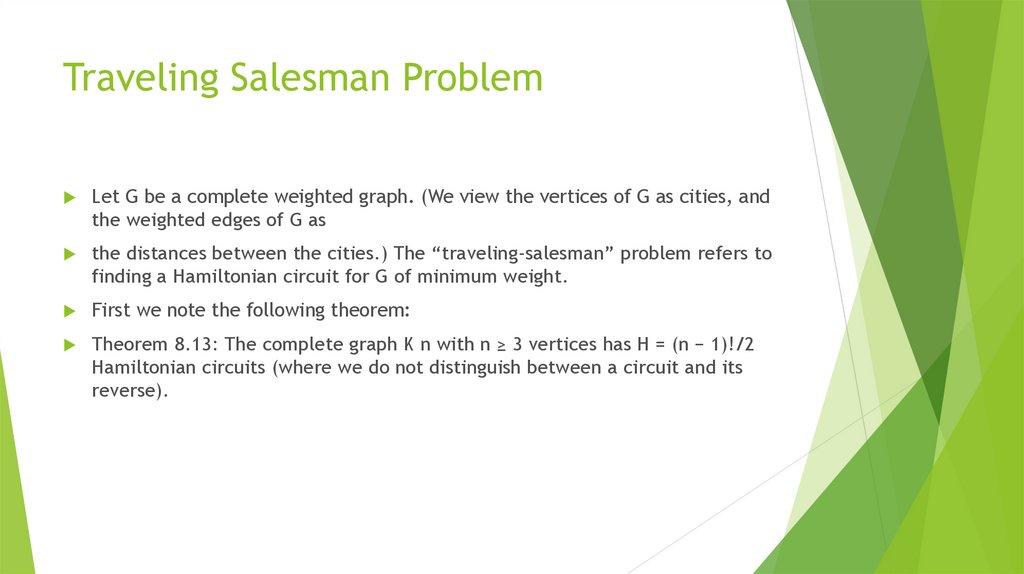





 Математика
Математика








